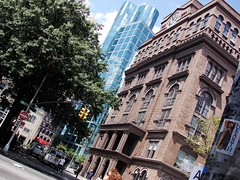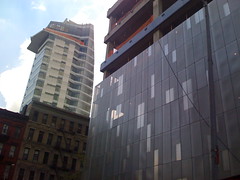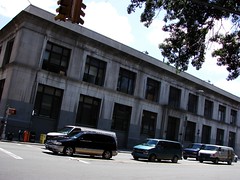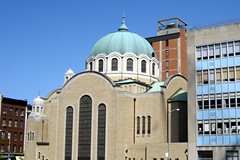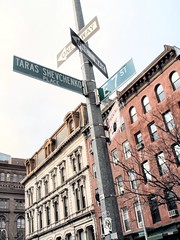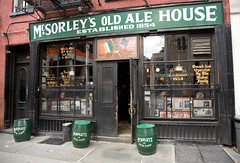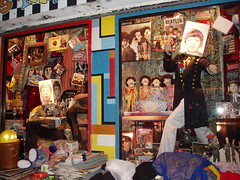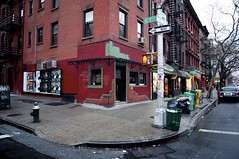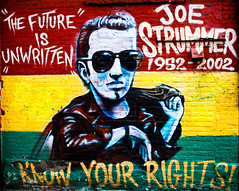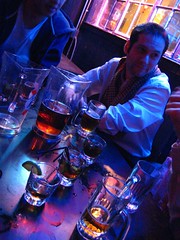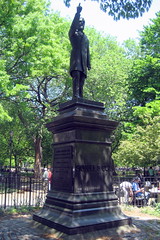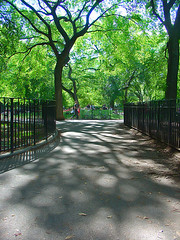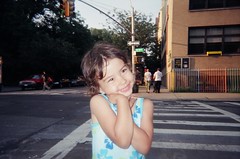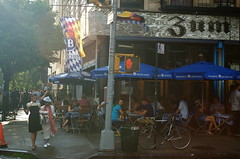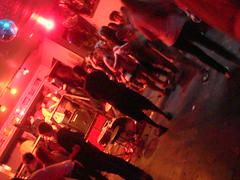North:
91: Caracas Arepas Bar was
Reality Sandwich Company, and before that
Harry's Burritos.
93: Tibet Artifacts; Pat Pong, Thai restaurant
named for Bangkok's red-light district.
97-99: Great carved faces on building.
97 1/2: Was
Penny's Herb Company & General
Store, reportedly relocated upstate;
now a vintage clothing shop.
St. Stanislaus Church
101: Built 1872. There used
to be some tension between this
Polish-oriented Roman Catholic church and
Body Worship, across the street,
because the church's statue of Pope John
Paul II had to look at some pretty risque
window displays.
111: McKinley Building, built late 19th
Century, used to house
Tompkins Square Books and Records. Now houses
The Bourgeois Pig, a decadently decorated bistro.
Was/is Heatherette, fabulous clubwear; also Village Style.
117: Kut Kut Accesories used to be Chimaera jewelry
121: St. Mary's American Orthodox Greek Orthodox Church
123:
Locks & Lads, funky hair salon for
kids and grownups too. This is where my kid
gets her hair cut; they do a great job and have
yet to make her cry.
125: Bodanna Handmade Ceramics. Formerly
Theo Wolinnin Licenced Undertaker; later a vintage
store ghoulishly called Resurrection.
127: The Shape of Lies, museum reproductions. Also Bijoux.
129: Peter Jarema Funeral Home
131: Other Wordly Waxes and Whatever, candle magic
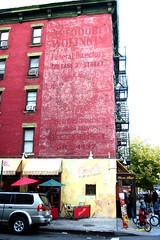
Corner: Leshko's, a grungy Ukrainian diner, turned
into a trendy lounge;
now it's Yuca Bar, a Latin restaurant.
| 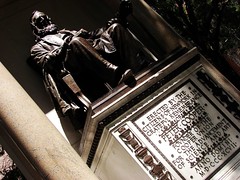 Statue of Peter Cooper was made in 1894 by Augustus Saint-Gaudens,
who was taught sculpture at Cooper Union. The surrounding structure was designed by Stanford White.
Statue of Peter Cooper was made in 1894 by Augustus Saint-Gaudens,
who was taught sculpture at Cooper Union. The surrounding structure was designed by Stanford White.
